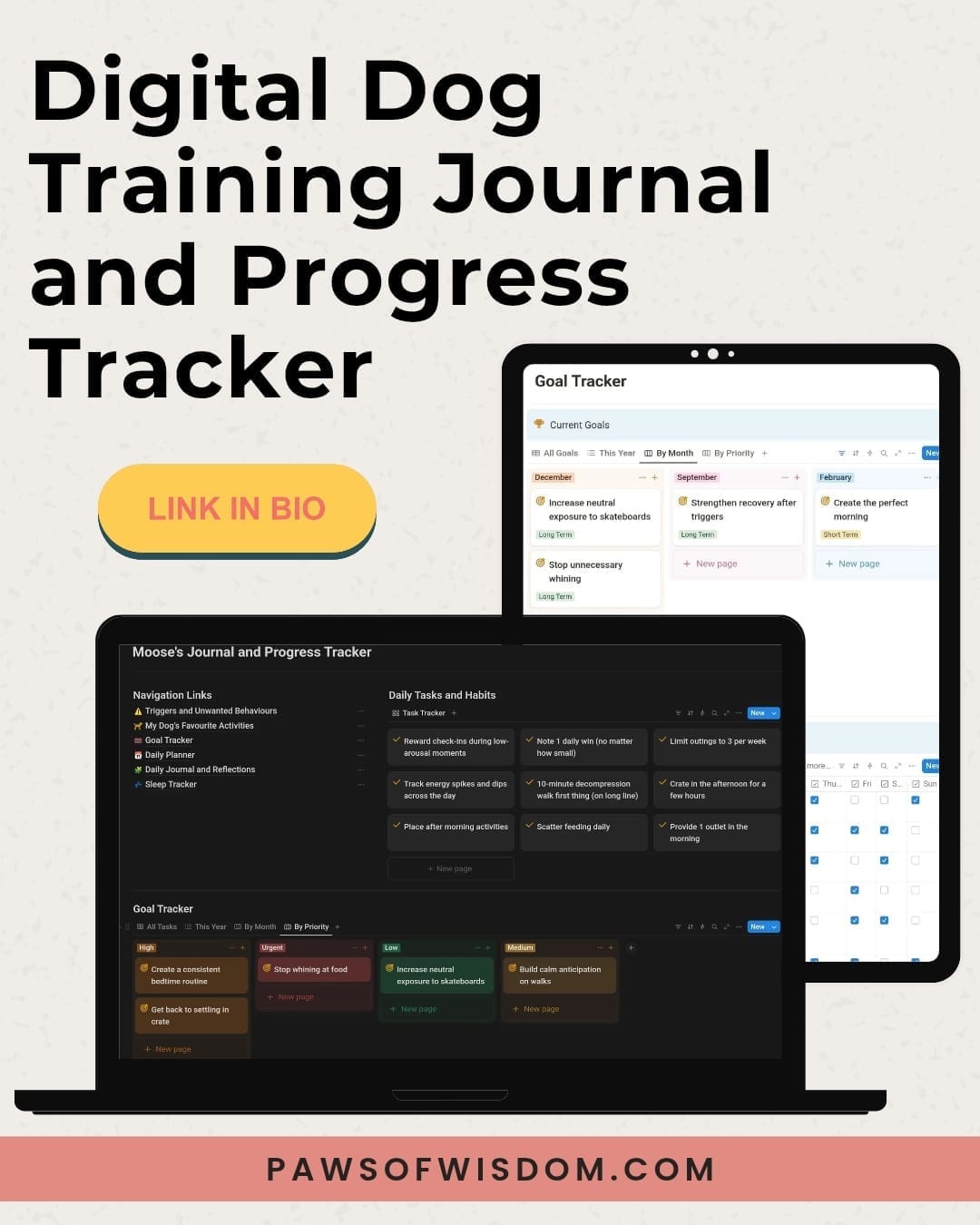Self-Care for Reactive Dog Owners: 5 Practices That Changed My Life
Living with a reactive, anxious, or challenging dog can take a toll on everything; not just on your schedule, or your lifestyle, but on your mental health and your emotions too.
This is why self-care for dog owners is so important. Because when you’re constantly managing triggers, training, and the emotional rollercoaster that comes with it, it’s easy to give everything to your dog and forget about yourself.
But the problem is...if you’re running on empty, you can’t show up fully for your dog.
For years with Jasper, I put his needs above mine. I thought I was being a good owner, but really, I was running myself into the ground. My patience was thin, my mindset was negative, and every setback felt like a sign that things would never improve.
The shift happened when I realised my his well-being was deeply connected to my own. When I took care of myself and started resting more, finding support and managing my stress — I became calmer, more consistent, and more present. And Jasper responded a lot better to that version of me.
Today, I want to share the five self-care practices that helped me go from burnt out and overwhelmed to grounded and hopeful again.

Before We Start: The “Holy Trinity” for Humans
I talk a lot about the Holy Trinity for dogs — proper rest, purposeful outlets, and mental stimulation.
Guess what? We need our own version, too. Our own set of non-negotiables that we have to make time for. Things we enjoy. Things that makes us feel good. Things that speak to our souls.
For me, the human Holy Trinity looks like:
Rest – downtime that genuinely recharges me. Early and regular bedtime.
Support – people and spaces that lift me up. Online communities. Friends.
Purpose – meaningful action that gives me a sense of progress. Journaling. Meditation. Writing.
The five practices below fit into that framework. They’re not about overhauling your life and outlook overnight. They were small, sustainable shifts that build resilience over time.
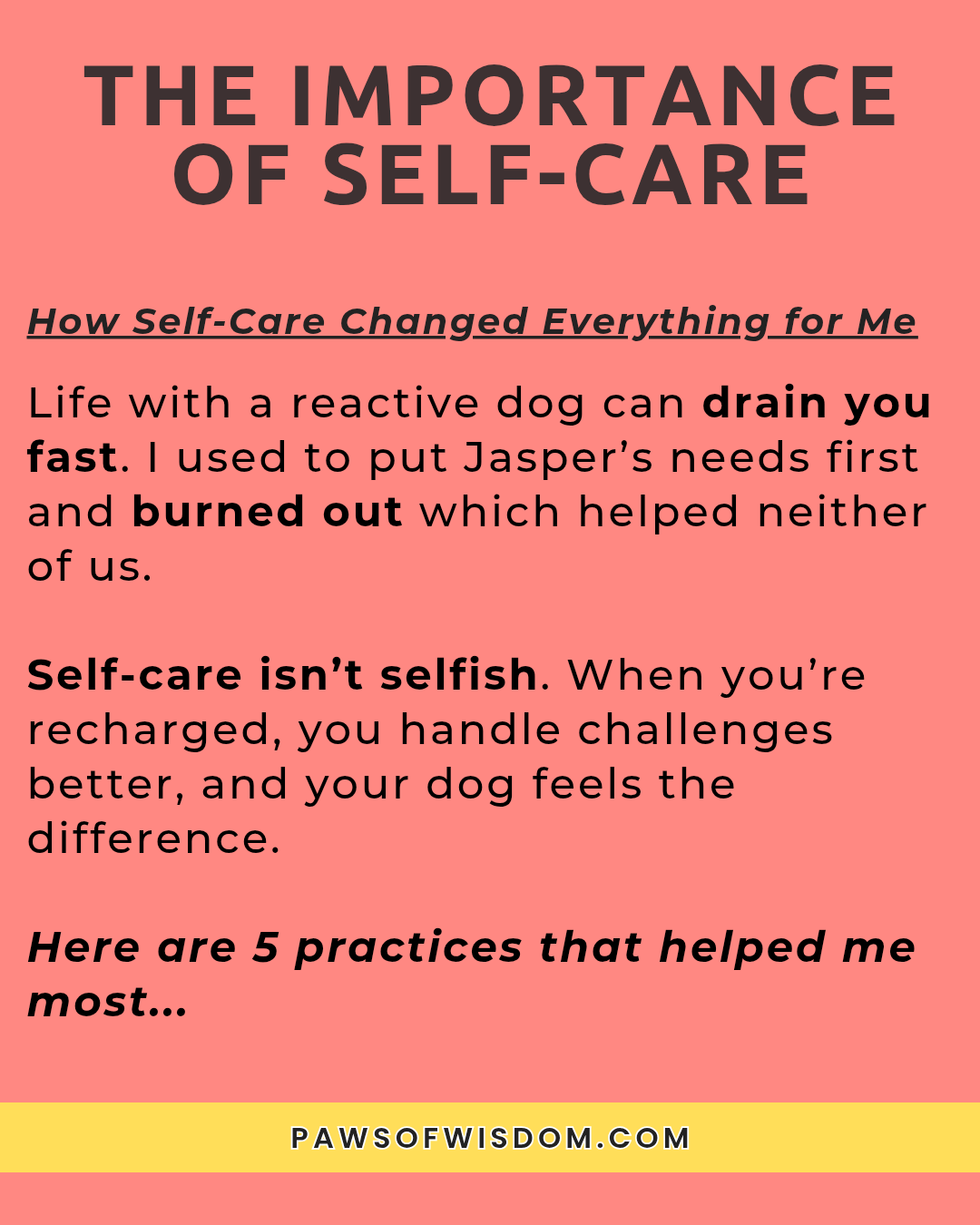
#1 - Meditation: Finding Calm In The Chaos
Summary: A few minutes of stillness can stop a bad moment from turning into a bad day.
One bad walk. One unexpected reaction. One training setback. That’s all it can take to spiral into frustration. Meditation gave me a way to press pause, reset, and choose how I wanted to respond.
When I started meditating, even for just 5 minutes after a stressful walk, I noticed the tension lift faster. Instead of carrying the frustration into the rest of my day (and into my next walk with Jasper), I could let it go and move forward with grace and clarity.
Tip: Don’t aim for perfection. Start small with one to two minutes of focusing on your breath and reflecting on the incident before letting it go. This can be enough to change the tone of your day.
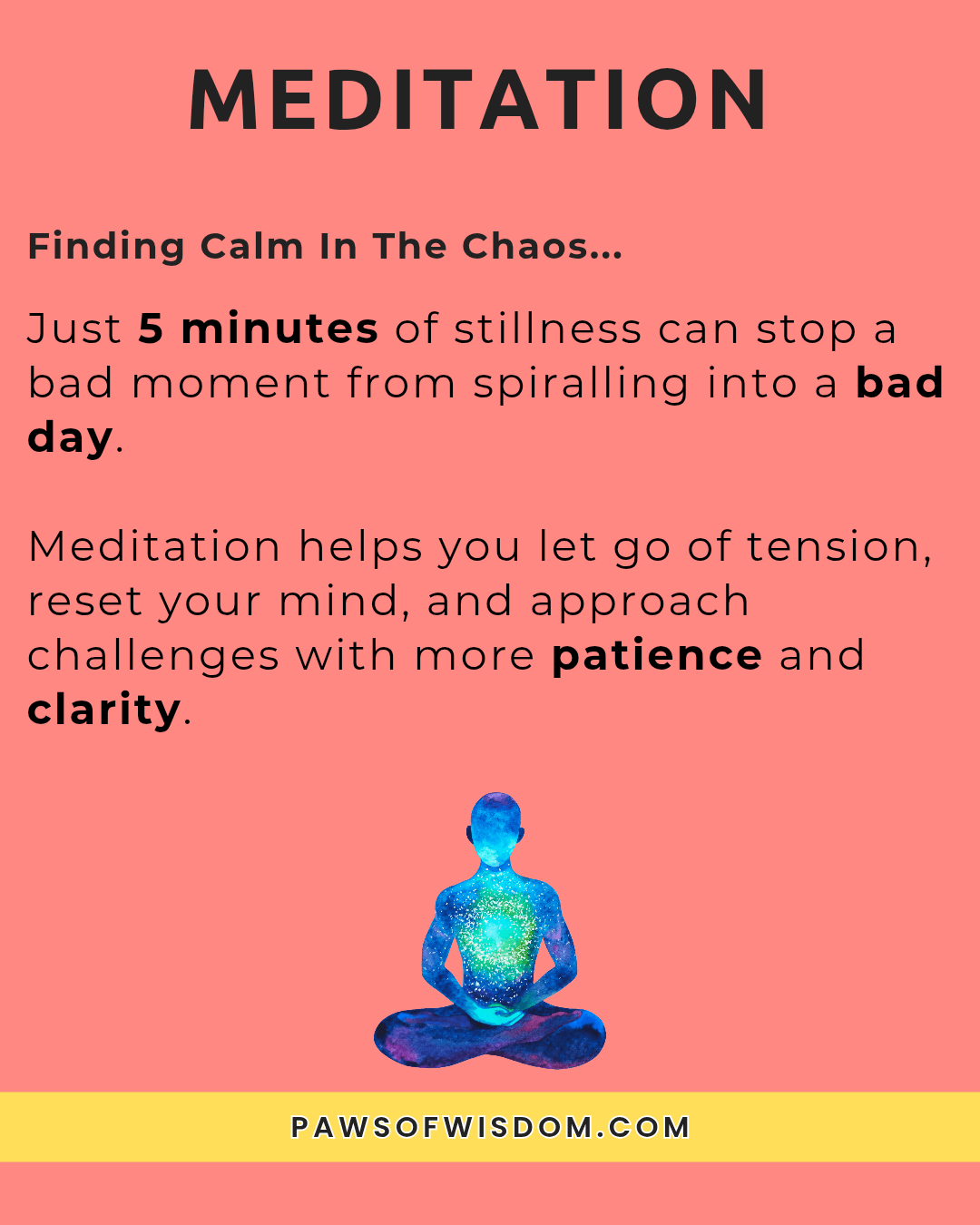
#2 - Breathwork: Releasing Tension in the Moment
Summary: If you can control your breath, you can control your life.
Stress doesn’t just sit in your mind...it lives in your body. On difficult walks, I used to unknowingly hold my breath, tense my shoulders, and grip the lead too tightly. Jasper picked up on that tension instantly.
Breathwork became my in-the-moment reset button. Before leaving the house, mid-walk, or after a trigger, I’d take slow, intentional breaths (in for four counts, out for six). It stopped me from transferring my stress to Jasper and helped us both stay calmer.
Tip: Pair your breathwork with a mental cue like “loose lead, loose shoulders” to remind your body to soften.
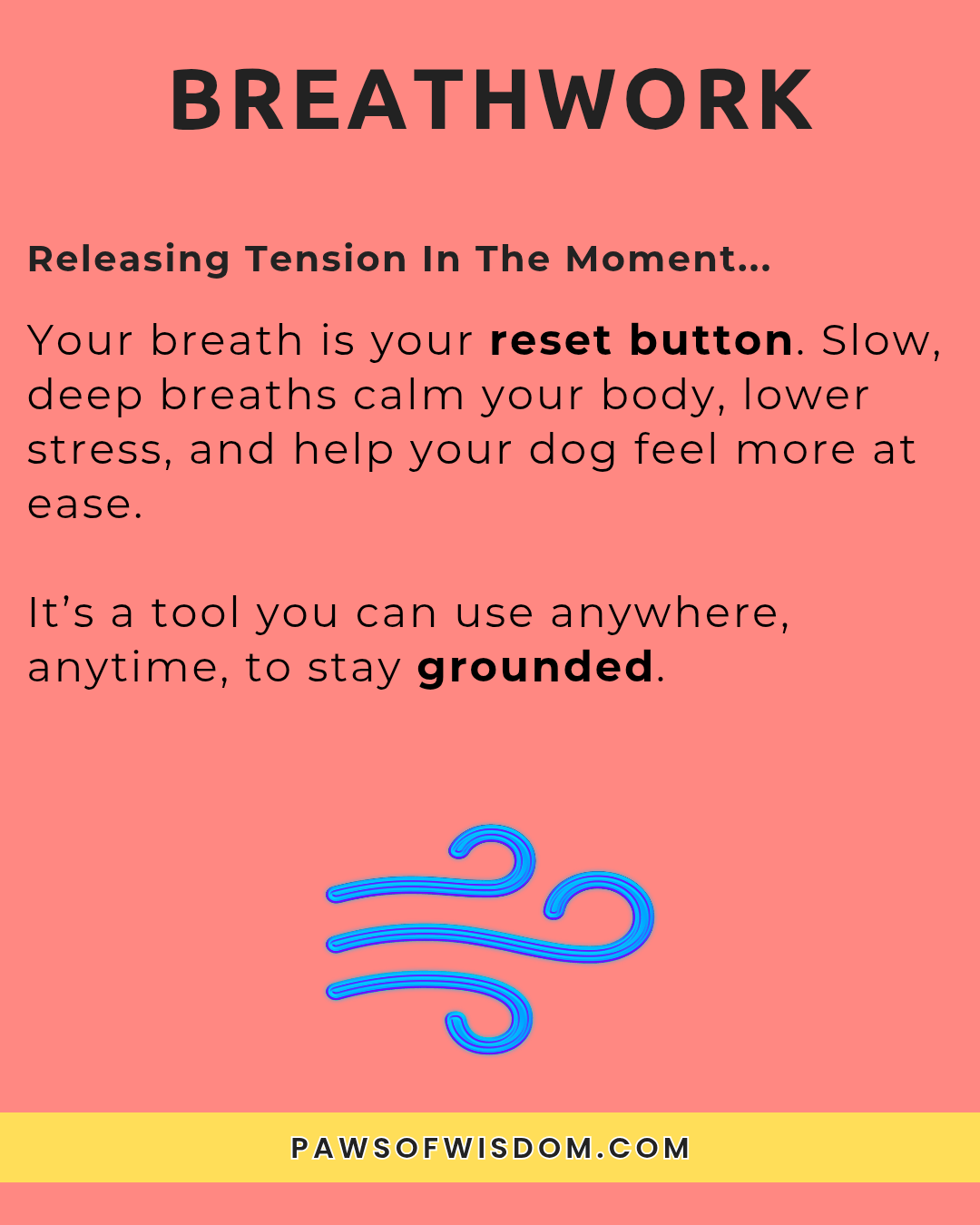
#3 - Journaling: Reflect, Release, Reset
Summary: Clarity comes when you put your thoughts on paper instead of clogging up your brain.
Journaling gave me space to process the messy emotions and mental fog that come with training a challenging dog. But it also became a powerful training tool...
By tracking Jasper’s progress, I could see patterns, anticipate triggers, figure out what was working and wasn't, course correct when getting off track and celebrate the wins even on the tough days.
That’s why I created my Notion Dog Training Journal — so owners like us can track training, emotions, and progress in one place without the overwhelm. It’s a self-care tool and a training aid.
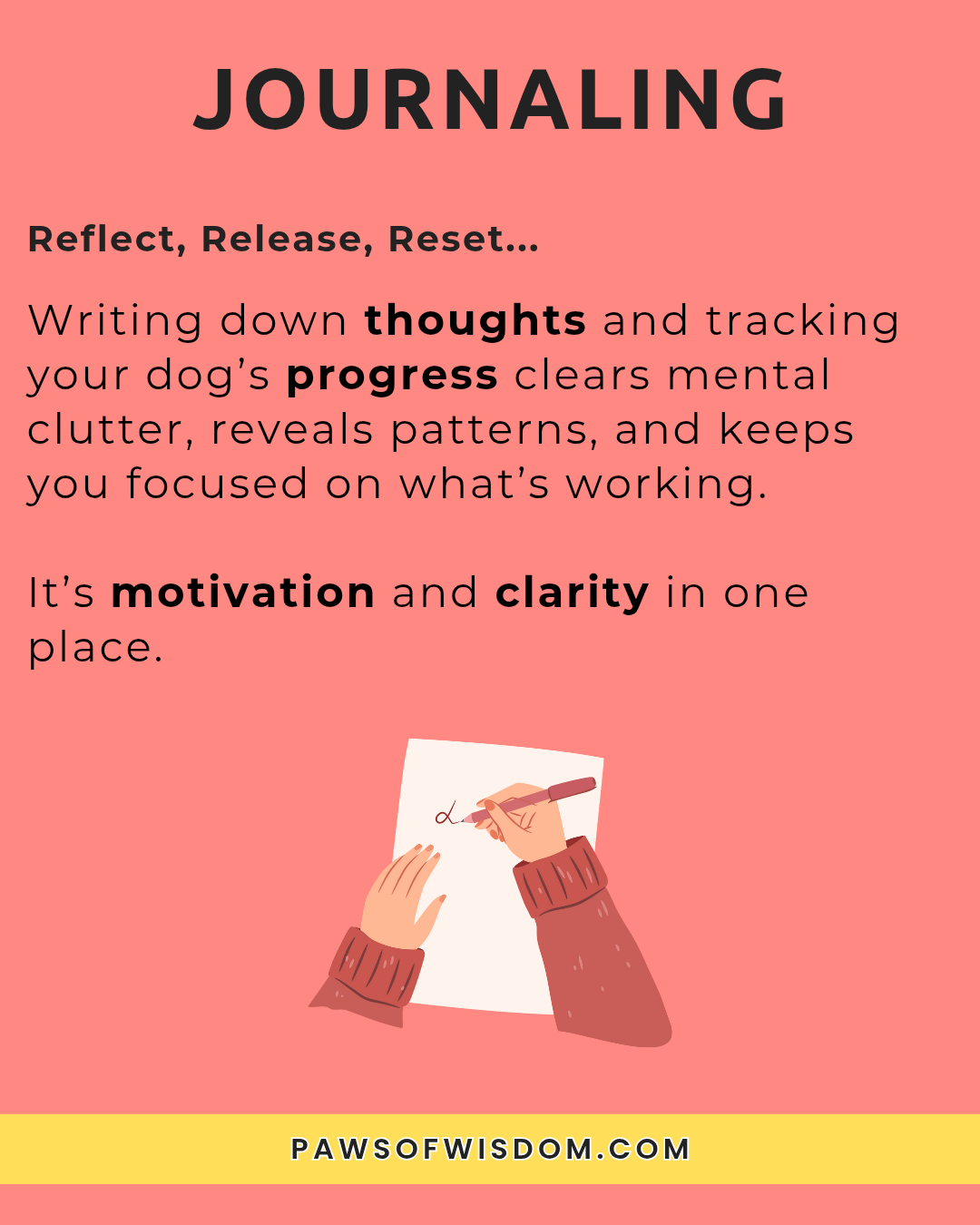
💡 Want to make journaling even easier?
I created the Paws of Wisdom Digital Dog Training Journal to keep all my notes, reflections, and progress tracking in one place. It’s the exact system I use with Jasper — simple, organised, and always there when you need it.
#4 - Finding Support: You Are Not Alone
Summary: Connection can pull you out of your lowest moments.
For a long time, I felt like no one understood what life with a reactive dog was really like. Walks felt like battlefields, training felt like pressure, and social media made it look like everyone else had “perfect” dogs and had it figured out (spoiler warning - they don't) .
That changed when I found other owners who got it. Talking to people who understood the bad days (and celebrated the tiny wins) made me feel less alone and more motivated to keep going.
Looking for a community? Come join the Regulators Community — for owners of chaotic and over-the-top dogs!

#5 - Gratitude: Loving Your Dog for Who They Are
Summary: Gratitude changes the way you see your dog and your journey together.
When you live with a reactive, anxious, or challenging dog, it’s easy to let the struggles take over your perspective. But one of the most powerful self-care practices is gratitude - taking time to truly appreciate your dog for who they are right now, not just who you’re working towards.
Gratitude shifts your mindset. Instead of fixating on what’s “wrong,” you start noticing the moments you love like the way they greet you at the door, the goofy thing they do with their favourite toy, the little improvements that might go unnoticed otherwise.
With Jasper, I realised I’d been so focused on fixing behaviours that I’d stopped appreciating the dog in front of me. When I started writing down one thing I was grateful for each day about him, our relationship felt lighter. The journey became less about “getting somewhere” and more about enjoying where we were.
Remember: Gratitude doesn’t erase the challenges, but it makes them easier to face. It reminds you why you started this journey in the first place and strengthens the bond you share.
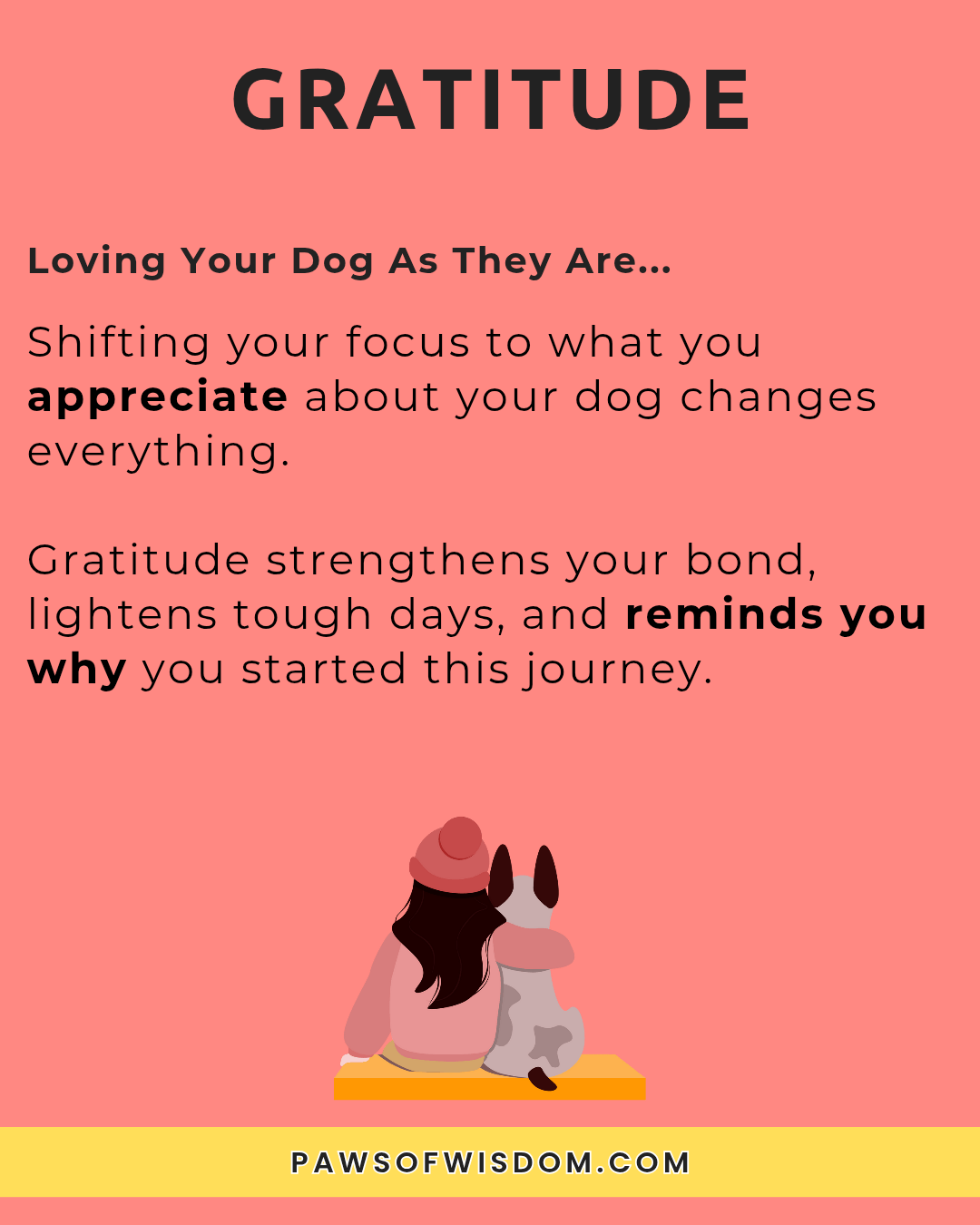
#6 – Making Time for Yourself Without Your Dog
Summary: Time away from your dog is just as important as time spent with them.
Here’s the truth — it’s okay to take time away from your dog. In fact, it’s essential.
There are those who believe if you have a dog you can't leave the house, or live with closed doors. But when every waking moment revolves around managing, training, or worrying about them, you lose touch with the parts of yourself that exist outside of “dog owner”.
Whether it’s grabbing coffee with a friend, going to the gym, wandering around a bookstore, or taking a solo walk, time away helps you recharge as you. You come back calmer, more centred, and with more patience which your dog will benefit from, too.
I used to feel guilty for leaving Jasper behind, but I learned that the world doesn’t end when I’m not there. He rests, he copes, and I return refreshed instead of running on fumes or annoyed at having to come back early.
Taking space doesn’t mean you love your dog any less, it means you value yourself enough to keep your own cup full. And a full cup is exactly what you need to give them your best.
Regulation before expectation (for both you and your dog).
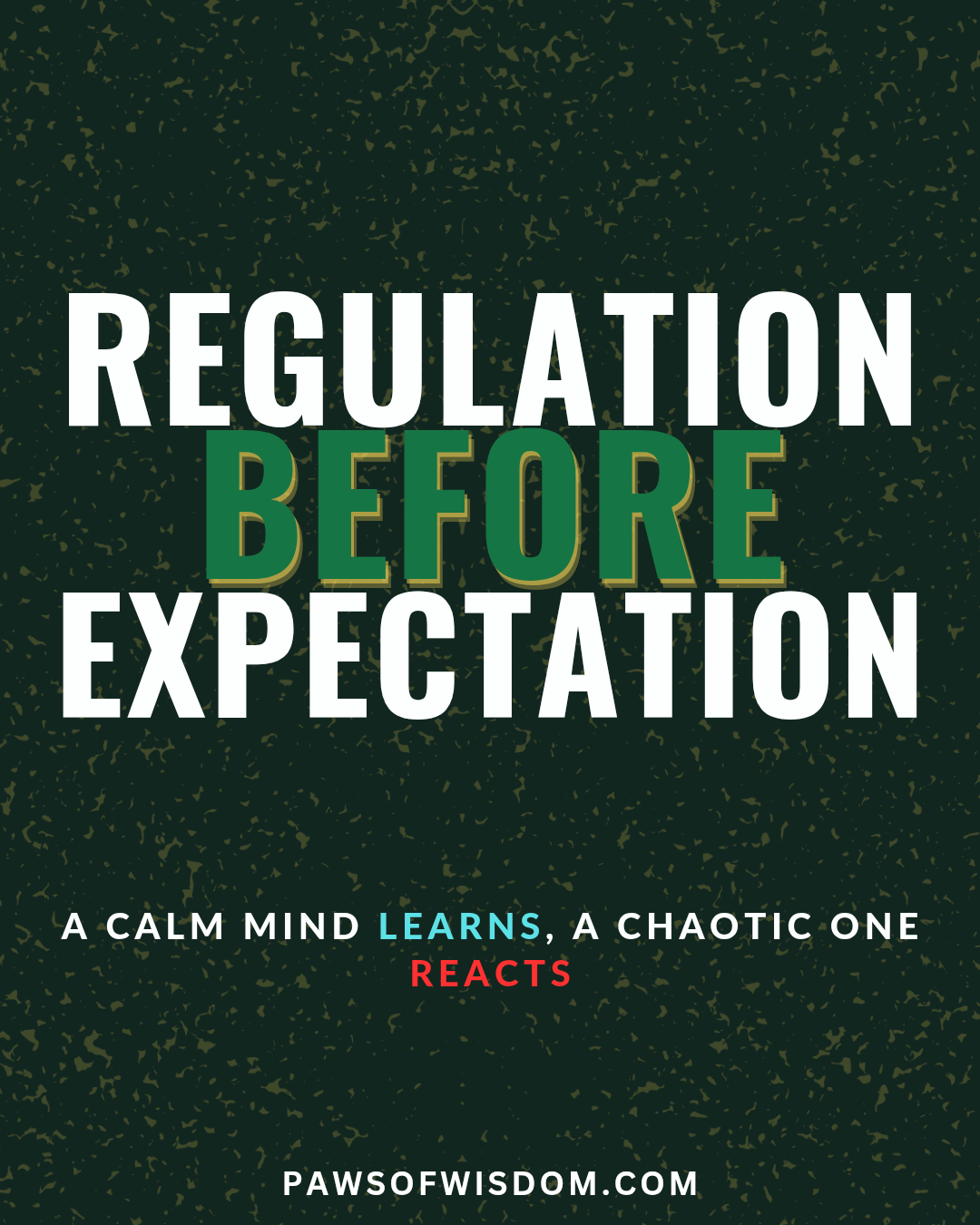
Final Thoughts
You can’t pour from an empty cup.
When you’re constantly giving your energy to your dog it’s easy to forget about yourself.
Self-care for dog owners isn’t selfish. It’s essential. To avoid burnout. To protect your peace. To protect your dog's peace. These five practices helped me show up as the calmer, more grounded version of myself that Jasper needed.
The best part? None of them take hours out of your day. They’re simple, sustainable habits that build resilience over time. Start with one, make it part of your routine, and watch the ripple effect it has on you and your dog.
Trust me.
Frequently Asked Questions (FAQs): Self-Care For Dog Owners
Start small. Even a few minutes of meditation, breathwork, or journaling can make a difference. Build these moments into your dog’s routine e.g. journal while you have a coffee after the walk while your dog is on place or enjoying a Kong.
Dogs are highly sensitive to our emotional state. If you’re tense, frustrated, or anxious, they can pick up on it and mirror that energy. Self-care helps you stay calmer and more consistent, which creates a better environment for your dog to learn and settle.
A break is temporary relief. Self-care is habit, intentional and consistent, helping you build resilience over time. The goal isn’t just to “recover” after hard days but to prevent burnout before it happens.
Yes. When you’re calmer, more patient, and mentally present, your dog responds better. Plus training sessions become more productive because you’re approaching challenges with clarity instead of frustration.
Pick one that feels low-pressure. Many owners start with breathwork because it’s quick, free, and you can do it anywhere including mid-walk when stress is highest.
Related Reading
A FREE community with downloadable guides and resources, and people who get it.
A simple and structured reset for overstimulated, dysregulated, chaotic dogs.
Simple, clear guidance to help you understand your dog through a regulation-first lens.






